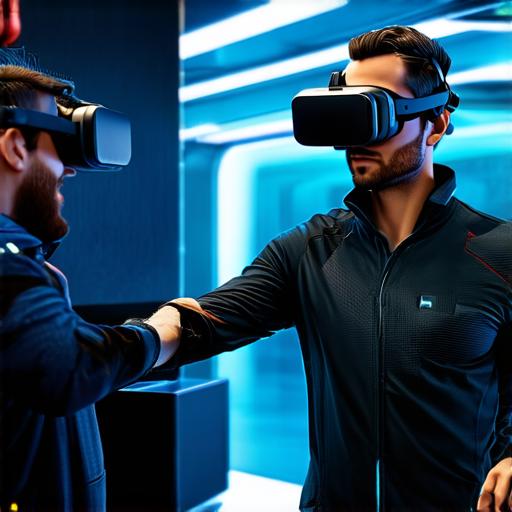The Evolution of VR: A Journey from Gaming to Everyday Life
From the bulky, monochrome VR headsets of the 90s like the Virtual Boy or the Sega VR, to today’s sleek, high-resolution devices such as the Oculus Rift and HTC Vive, VR has come a long way. The gaming industry was its first major adopter, but now, VR is finding its place in education, healthcare, real estate, and more.
Early VR systems like the Sega VR or Nintendo Virtual Boy were limited by their low resolution displays, heavy hardware, and high latency rates, making them uncomfortable to use for extended periods. However, advancements in display technology, miniaturization of components, and improvements in motion tracking have made modern VR headsets lightweight, comfortable, and capable of delivering immersive experiences.
VR in Action: Case Studies and Personal Experiences
Consider the medical field. VR simulations are revolutionizing surgical training, allowing doctors to practice complex procedures without risking patient lives. In the realm of real estate, virtual tours offer a more immersive, realistic experience than traditional 2D images, enabling potential buyers to explore properties from the comfort of their homes.
The Science Behind VR: Pushing the Boundaries
The advancements in VR are driven by research and experimentation. Improvements in display resolution, reduction in latency, and the development of haptic feedback systems are just a few examples. These innovations aim to create a more realistic, immersive experience for users, making them feel as if they are truly present in the virtual environment.
The Future of VR: A Glimpse into the Unseen
The future of VR is exciting. With advancements in AI and machine learning, we can expect more intuitive, personalized experiences. Augmented Reality (AR) and Mixed Reality (MR), which blend digital and physical worlds, are also on the horizon. These technologies promise to revolutionize industries such as manufacturing, retail, and entertainment by enabling real-time collaboration, remote maintenance, and immersive marketing campaigns.
VR: A New Normal?
As VR continues to evolve, it’s not hard to imagine a future where virtual interactions become as commonplace as phone calls or video chats. However, this raises important questions about our relationship with technology and the impact of such immersive experiences on our lives. Will we spend more time in virtual worlds than in the real one? How will this affect our social interactions and mental health? These are questions that society must grapple with as VR continues to advance.
FAQs
Q: Is VR only for gaming?
A: Absolutely not! VR is being used in various industries including healthcare, education, real estate, and more.

Q: What’s the difference between VR, AR, and MR?
A: VR creates a completely digital environment, while AR overlays digital information onto the real world. MR combines both VR and AR, allowing users to interact with both virtual and real-world objects.
